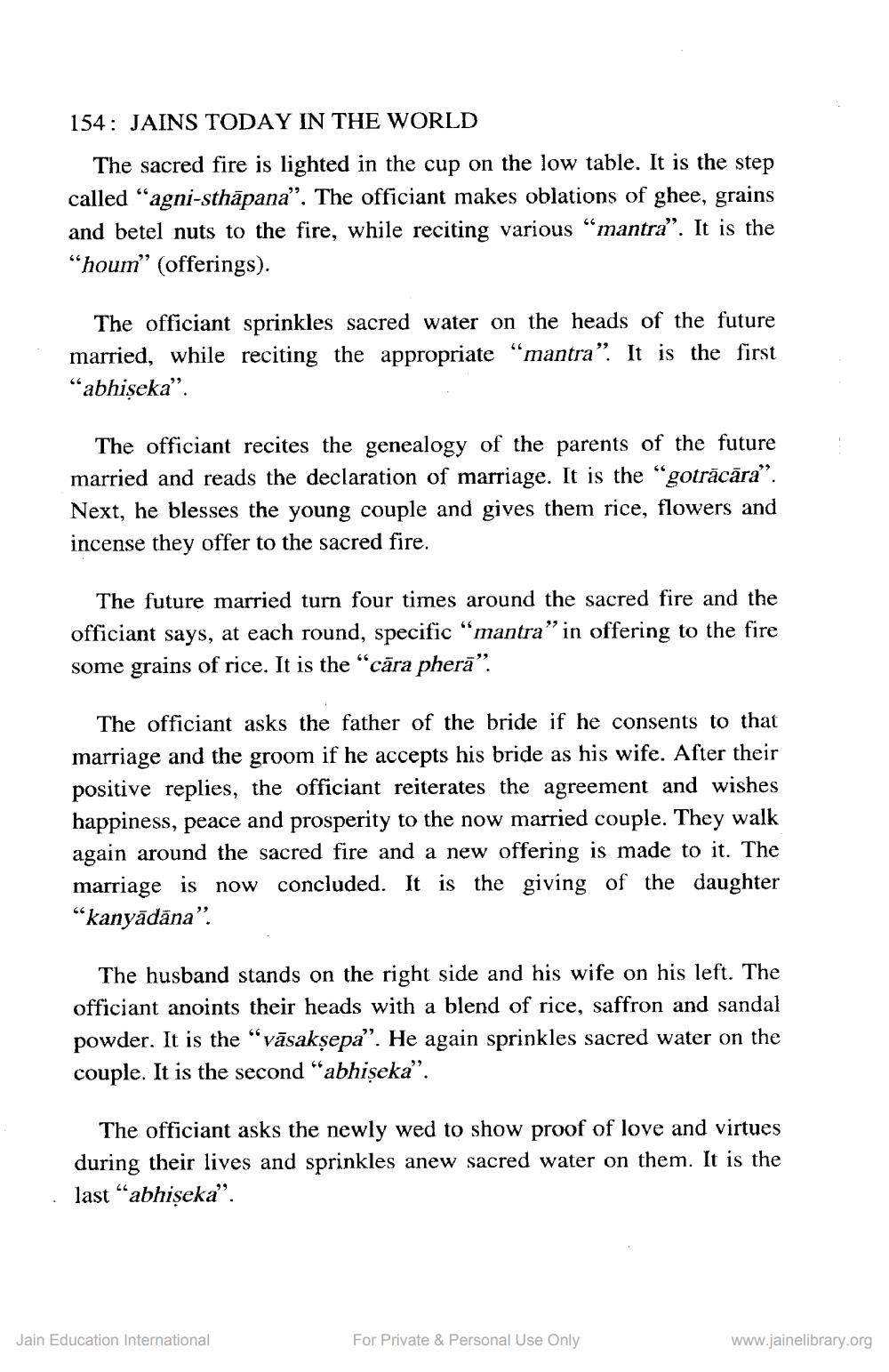________________
154: JAINS TODAY IN THE WORLD
The sacred fire is lighted in the cup on the low table. It is the step called “agni-sthāpana". The officiant makes oblations of ghee, grains and betel nuts to the fire, while reciting various “mantra”. It is the “houm" (offerings).
The officiant sprinkles sacred water on the heads of the future married, while reciting the appropriate “mantra". It is the first "abhiseka”.
The officiant recites the genealogy of the parents of the future married and reads the declaration of marriage. It is the “gotrācāra”. Next, he blesses the young couple and gives them rice, flowers and incense they offer to the sacred fire.
The future married turn four times around the sacred fire and the officiant says, at each round, specific “mantra" in offering to the fire some grains of rice. It is the “cära pherā”.
The officiant asks the father of the bride if he consents to that marriage and the groom if he accepts his bride as his wife. After their positive replies, the officiant reiterates the agreement and wishes happiness, peace and prosperity to the now married couple. They walk again around the sacred fire and a new offering is made to it. The marriage is now concluded. It is the giving of the daughter “kanyādāna”.
The husband stands on the right side and his wife on his left. The officiant anoints their heads with a blend of rice, saffron and sandal powder. It is the "vāsakṣepa”. He again sprinkles sacred water on the couple. It is the second “abhișeka”.
The officiant asks the newly wed to show proof of love and virtues during their lives and sprinkles anew sacred water on them. It is the · last “abhiseka”.
Jain Education International
For Private & Personal Use Only
www.jainelibrary.org




